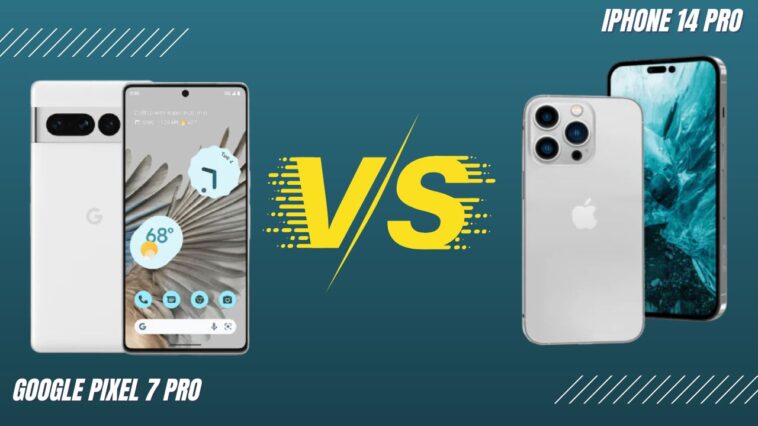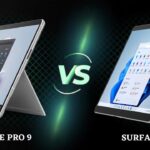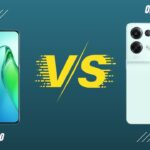Table of Contents
The Pixel 7 Pro and iPhone 14 Pro are probably on your list of choices if you want to buy one of the greatest phones currently on the market. They are both high-end, premium smartphones with the newest hardware from their respective brands. The iPhone 14 Pro maintains the most recent processor and top-tier hardware and features while being the most comparably priced to the Pixel 7 Pro. After years of the iPhone dominating the market, Google decided to step up and create a series of “pro” phones to compete with Apple’s own high-end, premium handsets.
Google launched the Pixel 7 series in response to Apple’s release of the iPhone 14 series. Although both series will compete against one another, the Pixel 7 Pro and the iPhone 14 Pro are the devices with the highest performance. Both companies’ flagships promise to deliver the best software experience they have to offer, supported by outstanding camera performance. In this Pixel 7 Pro vs. iPhone 14 Pro comparison, we’re testing both phones against one another. We will, of course, discuss all the important topics, such as design, performance, screen, cameras, battery life, and others. Also, keep in mind that the Pixel 7 Pro and iPhone 14 Pro will be our only focus.
Google Pixel 7 Pro Vs iPhone 14 Pro: Comparison Table
| Features | Google Pixel 7 Pro | iPhone 14 Pro |
| Launching Year | 2022 | 2022 |
| Brand | Apple | |
| Model Name | Google Pixel 7 Pro | Apple iPhone 14 Pro |
| Series | Google Pixel Series | Apple iPhone Series |
| OS | iOs | Android |
| Design | Gorilla Glass Victus front and back, aluminum frame | Ceramic Shield front + Glass back and stainless steel frame |
| Display | 6.7-inch LTPO AMOLED, 120Hz refresh rate | 6.1‑inch OLED display, 120Hz refresh rate |
| Camera | 50 MP main, 48MP Telephoto, 12MP Ultra Wide, 10.8MP front | 48MP Main, Ultra Wide, Telephoto, Front: Advanced dual-camera system, 12MP Main Ultra Wide |
| RAM | 12GB RAM | 6GB RAM |
| Storage | 128GB, 256GB, 512GB | 128GB, 256GB, 512GB, 1TB |
| IP Rating | IP68 | IP68 |
| Online Pricing Range | ₹84,999 | ₹15288 |
| Customer Ratings | 4.5/5 | 4.5/5 |
READ MORE: Redmi A1+ Vs Redmi A1: Which Is The Best?
Google Pixel 7 Pro Vs iPhone 14 Pro: Detailed Analysis
Design
Both the iPhone 14 Pro and the Pixel 7 Pro have attractive designs. Compared to their base model counterparts, they have more elegant designs. The iPhone 14 Pro features a significant frontal redesign while maintaining the previous generation’s flattened form. Apple has replaced the notch with a new pill-shaped cutout that it has termed Dynamic Island. In contrast, the Pixel 7 Pro maintains a lot of the features of the Pixel 6 Pro while changing the appearance of the camera visor.
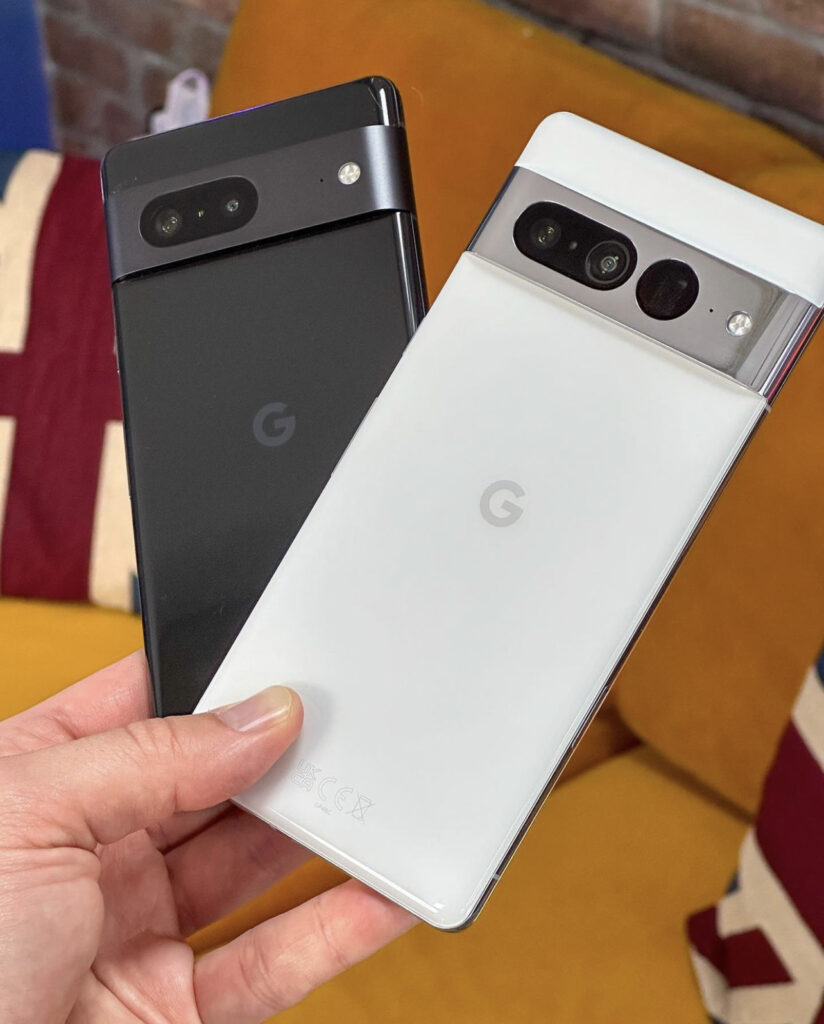
The build quality of both phones is excellent as well. The camera lens region is integrated into the glass of the iPhone 14 Pro’s complete glass back. Ceramic Shield glass is utilized in the iPhone 14 Pro. This type of glass is more likely to become scratched but is less likely to break. On the other hand, the Pixel 7 Pro features a screen made of Gorilla Glass Victus, which is extremely durable but not quite as good as the Ceramic Shield in protecting against breaking. Another important difference between the two is that the frame of the Pixel 7 Pro is made of aluminum, whereas the frame of the iPhone 14 Pro is made of stainless steel. While both should withstand regular use without issue, the iPhone 14 Pro has a better build overall.
Naturally, there is also the issue of size. While the iPhone 14 Pro maintains a more conventionally sized 6.1-inch display, the Pixel 7 Pro features a gigantic 6.7-inch display. Due to its increased size, the Pixel 7 Pro will be more difficult to handle. If you want something that fits better in your pocket, the iPhone 14 Pro would be a better choice.
Display
While we’re talking about displays, it’s also important to note that if you want a richer viewing experience, the Pixel 7 Pro might be the better choice. In addition to being bigger, it also boasts a panel with a substantially higher resolution (1,440 x 3,120). The resolution of the iPhone 14 is 1,179 x 2,556. You may counter that the difference in screen size is to blame, but the Pixel 7 Pro’s PPI—or pixels per inch—is 512, which is a significant improvement. The 460 PPI pixel density of the iPhone 14 Pro display is impressive. The panels are going to be almost as fantastic. The iPhone 14 Pro features an LTPO Super Retina XDR OLED screen, whereas the Pixel 7 Pro has an LTPO AMOLED display. Both feature a refresh rate of 120Hz. The screen on the iPhone 14 Pro is brighter, reaching a maximum of 2,000 nits. The Pixel 7 Pro screen’s maximum brightness is 1,500 nits.
Performance
The performance of the iPhone has always been its greatest asset, with best-in-class processing provided by Apple Silicon processors. With the launch of the Pixel 6 series, Google has just lately joined the custom silicon market. The Google Tensor G2 is found in the Pixel 7 Pro as opposed to the Apple iPhone 14 Pro’s A16 Bionic chip. In almost every benchmark you can throw at it, as well as many real-world use situations, the A16 will come out on top. It’s unlikely that you will notice much of a change in day-to-day use unless you often use your phone for CPU-intensive applications like video editing.
With regard to storage possibilities, the iPhone 14 Pro triumphs as well. Apple provides it with storage sizes of 128GB, 256GB, 512GB, and 1TB. Similar variations exist for the Pixel 7 Pro, but without the 1TB model. Both the Pixel and the iPhone’s marketing places a lot of emphasis on the quality of their respective cameras. This makes the Pixel’s lack of a 1TB storage option a little frustrating. With the Pixel 7 Pro, you get a great cloud experience, but it would have been good to have had the option to add 1TB of local storage. Therefore, the iPhone 14 Pro is the one to choose if you need extra local storage.
Battery
Let’s clear this up right away: The Pixel 7’s battery capacity is lower than that of the Pixel 6’s at 4,355mAh as opposed to 4614mAh. That makes sense, considering that the new phone is smaller overall and that the battery is merely the component that occupies the majority of the volume. We continue to be pleased with the battery life. The somewhat smaller display may have also contributed to Google’s ability to make the Tensor G2 more efficient than the first-generation chip. We were able to pluck out five hours of screen time in a mixed-use environment that involved taking numerous sample photos in various lighting situations, light public transit navigation, writing stuff on Google Docs, and extensive scrolling through Twitter, Reddit, and Chrome, with 5% remaining at the end of the most extreme day.
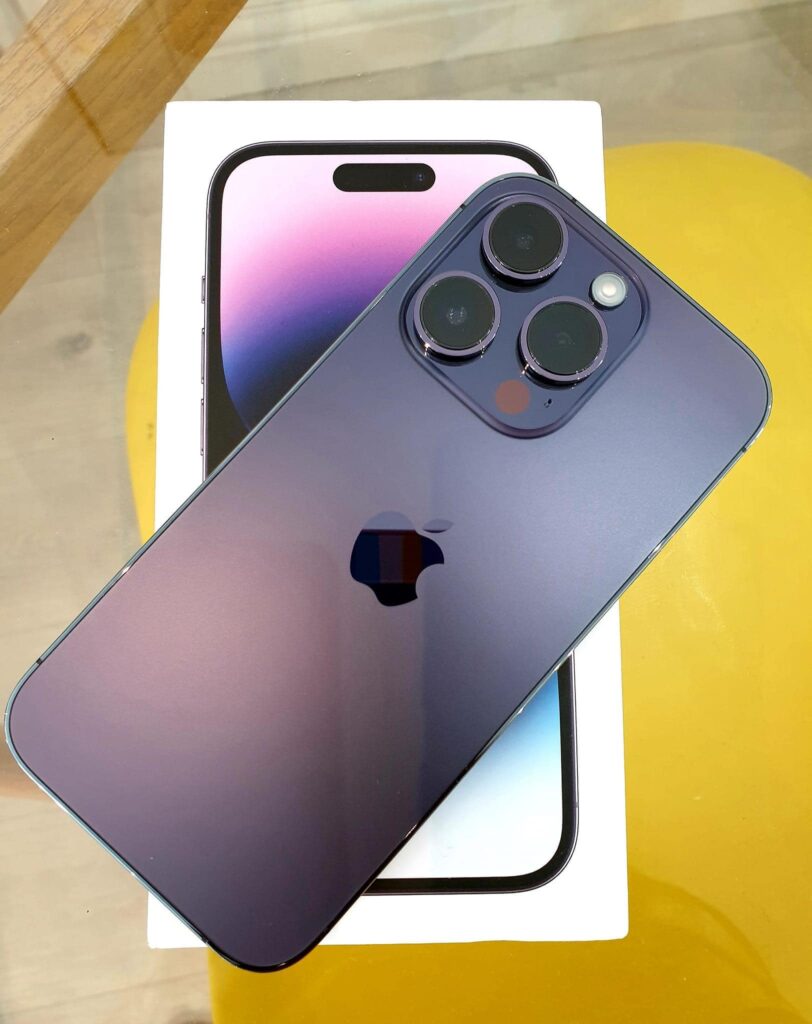
During testing, we unplugged the phone at around 8 or 9 am and didn’t recharge it again until between 10 and 11 pm. For these tests, we made no configuration changes; we simply activated the software’s notifications’ recommended power-saving modes, extreme battery savings at 10%, and battery saver at 20%. We tested the battery life of the Pixel 7; its initial experience is encouraging because it involves a lot of mixed-use, primarily on mobile networks, which typically consume more battery life than Wi-Fi connectivity. Battery depletion while on standby is one item that stands out and is previously a problem on the Pixel 6. The Pixel 6 and Pixel 7 with similar setups were left outside overnight with the always-on display turned on, and both devices lost roughly 10% of their charge during that period. If you don’t like to charge your phone overnight, the charging scenario is the same as in prior Pixel generations, which is disappointing. The Pixel 7 offers 21W fast charging, which is currently far slower than the competitors.
The battery that is included with the iPhone 14 Pro has a capacity of 3,200mAh, which is somewhat higher than the battery that is included with the iPhone 13 Pro, which has a capacity of 3,095mAh. Despite having a larger battery, we typically completed days of intensive use with 30–20% battery life left, which was comparable to what we saw with the iPhone 13 Pro that was released earlier. Given the additional battery consumption from the always-on display, even while that might not seem like an improvement, it is still outstanding. The new A16 Bionic processor’s efficiency enhancements are the only thing keeping the battery life essentially constant.
The phone’s battery life increases noticeably when the always-on display is turned off; at one point, We were finishing days with 40% battery life left. This does, however, take away a significant portion of functionality and a key component of the most recent iPhone. Regarding charging durations, Apple’s wired 20W fast charger can recharge 28% of the battery within 15 minutes and 57% after 30.
READ MORE: Motorola Edge 30 Fusion Vs Motorola Edge 20 Fusion: Which One is Better?
Camera
With the Pixel 7, Google will maintain its position as the industry leader in mobile photography. In reality, the Pixel 7 considerably improves the camera experience, especially for night shooting, while mostly maintaining the camera arrangement Google debuted with the Pixel 6. A 50MP primary camera and a 12MP ultrawide camera are included with the new phone.
The Pixel 7 takes night mode images much faster than the Pixel 6 and 6 Pro due to the Tensor G2 engine. In my side-by-side analysis, We were able to verify that Google’s claim of a 50% speed boost without a quality loss was accurate. The Pixel 6 and Pixel 7 offer nearly the same quality and brightness, with the seven capturing and processing photographs far faster than the 6.
But the Pixel 7 goes a step further. A little timer that indicates how long it will take to take a photo that will produce a clear image is displayed in the bottom right of the viewfinder when the camera detects a dark environment. When you press the shutter, a countdown will appear that will let you know when the picture will be entirely captured, and you can resume moving. The level in the center of the screen, which aids in keeping your hands steady during the shoot, is still attached to this. You also have more manual control overnight mode with the updated camera software. Three distinct options are available when you hit the timer: ordinary night mode, max night mode, and no night mode.
The largest resolution increase since the iPhone 6s’ initial introduction of a 12MP camera seven years ago occurred with the iPhone 14 Pro’s 48MP main camera. The real deal, though, is a considerably larger sensor that can capture more light for low-light photos and generate more bokeh, despite the nice resolution bump.
Even though the new sensor has a total resolution of 48 megapixels, it is only capable of shooting photographs at a resolution of 12 megapixels most of the time. This is due to the fact that it is a pixel-binning sensor, which merges every four pixels into one larger pixel for improved color fidelity and low-light performance. Since practically all Android phones with high-resolution cameras accomplish the same thing, this phone is far from the first to do so. Images must be captured in Apple’s ProRaw format if you want to capture the maximum 48MP resolution. This provides you with a lot of areas to edit and recover details, but it also results in large file sizes, so We wouldn’t recommend capturing every detail in this format.
Apple’s newest smartphone has significantly better image quality than the older iPhone 13 Pro. Because of its bigger sensor, the iPhone 14 Pro camera captures more detail in its photos, and the device also provides a somewhat blurrier background. The image quality improvements made by Apple’s new Photonic Engine to the other cameras, the majority of which are carryovers from the model from the previous year, are even more stunning. The overall dynamic range of the photographs taken with the telephoto and ultrawide angle cameras has been enhanced.
The need for a tripod can be reduced by using the new Action Mode for videos, which provides a lot of stabilization. If you capture any movies while walking, you’ll see that it provides some much-needed smoothness, to the point where it’s on par with the GoPro 11 Black that we’ve also been testing. Despite this, there is still a discernible amount of bobbing as you move. Action Mode video recording also requires a lot of light, so you won’t be able to utilize it until it’s bright daylight outside. Additionally, the maximum resolution for these films is 2.8K.
Features and Software
The feature and software comparison between Pixel and iPhone is quite similar. Both businesses have hardware that is both powerful and well-supported by OS. Of course, the Android vs. iOS debate is fairly old, so your decision will be simple if you favor one of the two. iOS offers improved privacy and the promise of an ecosystem that, if you have other Apple devices, functions fairly well. Android, on the other hand, provides more freedom and flexibility. Best-in-class software support is provided for both phones.
There are many new software features included with the Pixel 7 Pro. These include face unlock, which was absent from the Pixel lineup, audio message transcription, and unblur for photos. Additionally, the iPhone 14 Pro offers a number of unique capabilities, such as emergency SOS via satellite, which enables you to contact emergency services even if you don’t have access to cellular or Wi-Fi service. The Pixel 7 Pro and the iPhone 14 Pro both have a technology called “Crash Detection” for auto accidents.
The Pixel 7 Pro ships with Android 13 installed, giving you the best and most stock Android experience possible. The iPhone 14 Pro runs iOS 16, which offers enhanced customization tools that are getting near to those offered on Android. Because the software experiences offered by both of these phones are the best that can be found with their respective operating systems, you really can’t go wrong with either option.
Google Pixel 7 Pro Vs iPhone 14 Pro: Quick Results
| Particulars | Google Pixel 7 Pro | iPhone 14 Pro | Which One Is Better? |
| Design | Good | Better | iPhone 14 Pro |
| Display | Good | Better | iPhone 14 Pro |
| Performance | Good | Better | iPhone 14 Pro |
| Battery | Better | Good | Google Pixel 7 Pro |
| Camera | Better | Good | Google Pixel 7 Pro |
| Features And Software | Good | Good | Any |
Final Verdict: Google Pixel 7 Pro Vs iPhone 14 Pro
The choice between Google and Apple is becoming more difficult. Both the Pixel 7 Pro and the iPhone 14 have stunning designs, potent performance, excellent cameras, and incredible experiences. This conflict has been going on for a long time because Android and iOS were also developed by Google and Apple.
However, some situations place the phones in your possession on opposing ends of the spectrum. The screen of the Pixel 7 Pro is bigger and might be superior. Additionally, it boasts a significantly bigger battery, faster charging, and an AI camera system powered by Google. Price is undoubtedly a major consideration, and Google clearly leads in this area.
However, it’s impossible to deny that Apple has some benefits of its own. The build quality is a little bit better, the customer service is outstanding, and the design is still best in class. You also gain access to the Apple ecosystem as well as a user interface that is simpler, both of which are among the reasons that consumers continue to use iPhones.
READ MORE: iQOO 11 Pro 5G Vs. iQOO 10 Pro 5G: Which Is Better?


